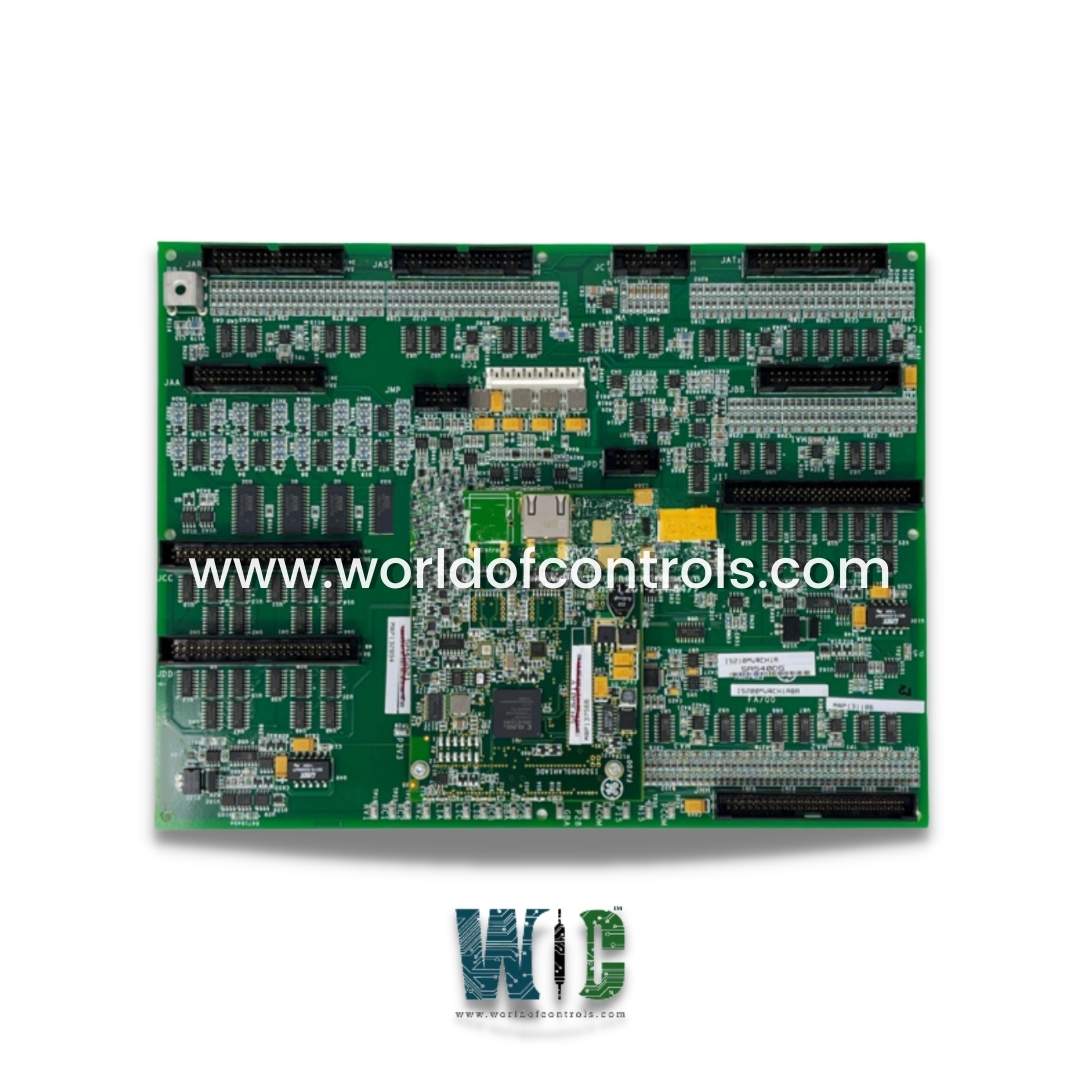
World Of Controls understands the criticality of your requirement and works towards reducing the lead time as much as possible.
IS200MVRBH1A - Expanded Analog I/O Interface Board is available in stock which ships the same day.
IS200MVRBH1A - Expanded Analog I/O Interface Board comes in UNUSED as well as REBUILT condition.
To avail our best deals for IS200MVRBH1A - Expanded Analog I/O Interface Board, contact us and we will get back to you within 24 hours.
SPECIFICATIONS:
Part Number: IS200MVRBH1A
Manufacturer: General Electric
Series: Mark VIe
Product Type: Expanded Analog I/O Interface Board
Power Inputs: 10 v
Mounting: DIN-rail mounting
Operating temperature: 0 to 60°C
Size: 11.00 inch x 8.40 inch
Repair: 3-7 Day
Availability: In Stock
Weight: 2 lbs
Country of Origin: United States
Manual: GEH-6800_Vol_II
FUNCTIONAL DESCRIPTION:
IS200MVRBH1A is an Expanded Analog I/O Interface Board manufactured and designed by General Electric as part of the Mark VIe Series used in GE Distributed Control Systems. The MVRB is an I/O board on the PMVE using the high-speed serial link (HSSL). The PMVE contains specialized code for the MVRB that communicates and controls the MVRB analog and digital I/O. Configuration parameters customize MVRB operation. The MVRB is a functional replacement for the Mark V TCQB board.
OPERATION:
The PMVE contains configuration parameters specific to the MVRB. External data is transferred to and from the control system database in the controller over the IONets. The PMVE propagates the control and data to each of its I/O boards. Data is transferred to the MVRB across the HSSL every five milliseconds. All analog and digital I/O signals are read and written at the 5 ms rate by the PMVE. The MVRB functions much like the TCQB and includes the 1/2x, 1x, and 2x shaft displacement and phase monitoring.
Protection capability in the application of blackware allows the blackware to monitor the wobble of the shaft relative to a keyphrase and also shaft vibration and balance of the shaft relative to a key phasor. The 1/2x is typically used to detect bearing oil leaks or any 1⁄2 rotational frequency event. The 1x is used for shaft balancing, or detecting any rotational frequency event. The magnitude is the force of the unbalance, and the phase is where the imbalance relative to the key phasor occurs. The 2x was proposed for 9H machines to detect blade cracking. This is only used at a steady state speed. If the blockware detected an x% degree phase shift at this steady speed, an alarm was annunciated. The 2x magnitude should be used as a qualifier. Since this feature was not verified, a change in the load may cause this shift.
WOC has the largest stock of OEM replacement parts for GE Distributed Turbine Control Systems. We can also repair your faulty boards and supply unused and rebuilt boards backed up with a warranty. Our team of experts is available round the clock to support your OEM needs. Our team of experts at WOC is happy to assist you with any of your automation requirements. For pricing and availability on parts and repairs, kindly contact our team by phone or email.
What is an Expanded Analog I/O Interface Board?
An Expanded Analog I/O Interface Board is a type of hardware used to extend the analog input and output capabilities of a system. It allows for additional channels to be connected, which can then interface with analog sensors and actuators, enabling control and monitoring of various systems in automation, industrial, and other applications.
What is the purpose of isolation on an analog I/O board?
Isolation prevents interference between channels and protects the system from voltage spikes, surges, or grounding issues. This is particularly important in industrial environments where electrical noise can degrade signal accuracy or damage the board.
How does an Expanded Analog I/O Interface Board connect to a system?
Typically, these boards connect via a PCI/PCIe slot, USB, or network interfaces like Ethernet or RS-485. Some systems may use proprietary connectors or communication buses.